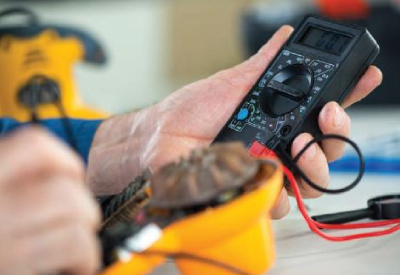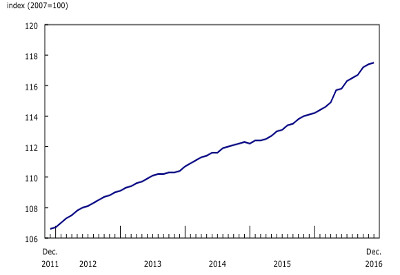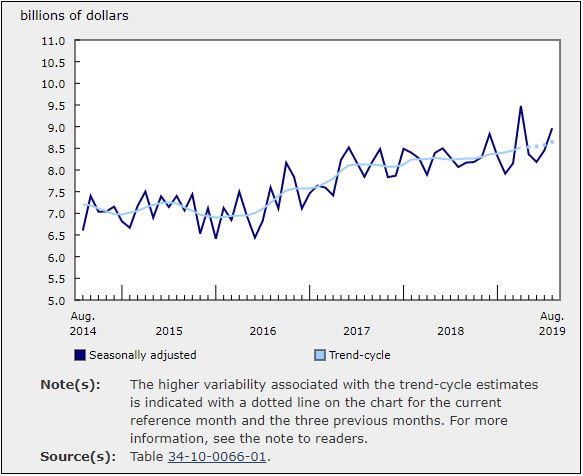How to Diagnose Power Quality Issues and the Tools to Help Troubleshoot

April 22, 2022
Electrical distribution problems are not always immediately identified as issues with power quality. An example of this is a thermal-magnetic circuit breaker. When it trips, the indication is generally a short circuit, ground fault, or overload. At times this can be put down to an old breaker that needs replacing.
However, it’s important to investigate the types of loads on the system and monitor harmonics for a potential disturbance.
This article explores common issues with power quality and how to troubleshoot those issues.
Tools for Troubleshooting Power Quality
Start with accurate, up-to-date drawings, and measure power quality parameters with a power quality analyzer.
Other instruments include a data logger, thermal imager, infrared thermometer, and recording digital multimeter.
Voltage and Harmonic Problems
Common issues are generally related to voltage anomalies and harmonic distortion. Often the issues associated with voltage anomalies can be easily spotted if you know the symptoms.
Voltage dips or sags are responsible for that majority of power quality issues. This occurs when the system voltage drops to 90 percent or less of nominal system voltage for a half-cycle to one minute.
Voltage dip symptoms include incandescent lights dimming, which occurs if the dip lasts more than three cycles – computer lockup, spurious shutdown of sensitive electronic equipment, data (memory) loss on programmable controls, and relay control problems.
Begin your voltage dip troubleshooting by monitoring at the load where the dip symptoms first occur. Compare the time of the equipment’s operational failure to the time at which the voltage dip occurred: there will be a correlation if a voltage dip is the issue. If not, continue troubleshooting by monitoring further upstream until the source is located. Use plant one-line drawings to help determine whether starting large motors is creating the dip, or whether there are other sudden increases in current requirements in the plant.
Voltage swells or surges occur approximately half as often as dips. Increases in system voltage for short periods up to a cycle or more may result in problems. As with all power quality issues, you must monitor parameters for a period of time, observe, and interpret.
Symptoms of swells can include immediate failure of equipment, typically the power supply section of electronics. Some equipment failures may not occur immediately. Voltage swells can occur over time and prematurely break down components. If analysis of electronic equipment reveals faulty power supplies, monitor voltage trends on the feeders and branch circuits feeding this equipment. Where possible, compare failure rates of similar equipment operating on portions of systems that you know aren’t experiencing swells.
When analyzing power quality survey results, look for sudden line-to-ground faults on a single-phase line. This type of fault causes the voltage to suddenly swell on the two non-faulted phases. Large plant loads suddenly dropping offline, and power factor correction capacitor switching, may cause voltage swells, as well.
Voltage transients may lead to symptoms ranging from computer lockups and damaged electronic equipment to flashover and damaged insulation on distribution equipment.
Transients, also called spikes, are large microsecond increases in voltage. Lightning strikes and mechanical switching are common causes. Equipment failure during a storm is often rightfully attributed to transients and no power quality monitoring is performed.
Other causes of transients include switching of capacitors or capacitor banks, reenergizing systems after a power failure, switching of motor loads, turning off or on fluorescent and HID lighting loads, switching transformers, and sudden stoppage of certain equipment. For these transient conditions: monitor at the load and correlate equipment operational problems or failure with distribution system events.
Normal arcing across contacts by interrupting large loads can result in transients. Use the facility one-line to move the monitoring further upstream in the distribution system until the source is found.
Voltage interruptions can last two to five seconds or more. The main symptom, generally, is that the equipment stops operating. Interruptions for longer than five seconds are typically referred to as sustained interruptions. The majority of motor control circuits and process control systems aren’t designed to restart after an interruption of power, even if its brief.
If a voltage interruption occurs when equipment is unattended, the cause of the equipment shutdown might not be properly identified. To identify voltage interruptions, you need to monitor equipment and correlating the time of any power interruptions to the time of equipment issues.
Voltage unbalance is one of the most common issues with three phase systems when it comes to power quality, and can result in major damage to equipment, however it can be overlooked. For example, a voltage unbalance of 2.3 percent on a 230 V motor results in a current unbalance of nearly 18 percent, causing temperature to rise 30 °C. A digital multimeter (DMM) and some easy calculations can be used for averaging voltage readings, although a power quality analyzer provides the most accurate information for an unbalance.
Unbalance can occur anywhere throughout the distribution system. Loads should be equally divided across each phase of a panelboard. If one phase becomes too heavily loaded in comparison to others, voltage will be lower on that phase. Transformers and three-phase motors fed from that panel may run hotter, be unusually noisy, vibrate excessively, and could suffer premature failure.
Monitoring over time is the key to capturing unbalance. In a three-phase system, the maximum variation in voltage between phases should be no more than 2 percent (the Vneg % value on the analyzer), or significant damage can occur to equipment.
Harmonics are voltages and currents where frequency is said to be an integer multiple of the fundamental frequency. For example, the third harmonic is the voltage or current that is occurring at 180 Hertz (Hz) in a 60 Hz system (3 x 60 Hz = 180 Hz). These unwanted frequencies cause many different symptoms, including overheating in neutral conductors and the transformers supplying these circuits. Reverse torque creates heat and efficiency losses in motors.
The most severe symptoms created by harmonics are generally the result of the harmonics distorting the fundamental 60 Hz sine wave found in facilities. This sine wave distortion results in improper operation of electronic equipment, spurious alarms, data losses, which are sometimes reported as “mysterious” problems.
When these types of symptoms occur, observe total harmonic distortion (THD). Significant increase in THD under varying load conditions warrants a percentage comparison of each individual harmonic current level as compared to the total fundamental current flow in the system. Knowing the effects created by each harmonic current and comparing them to identified symptoms will aid in troubleshooting. The source of the harmonic must then be isolated and corrected.
Conclusion
Voltage problems and the creation of harmonic currents are the two broad areas under which power quality problems occur. Dips and swells, voltage transients, power interruptions, and voltage unbalance can all be monitored, analyzed, and compared to equipment operation histories to determine the cause and severity of the power quality problem. The same can be done with the various harmonic currents in a system.















